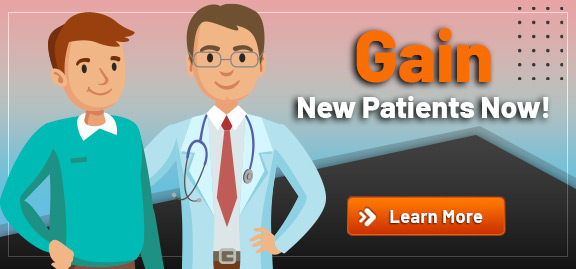Why Good communication Matters in Healthcare
Posted on
How to work successfully in the field of modern medicine? After all, the lives of patients depend on the quality of interaction between specialists. The better the professional connection, the more important things the patient will tell about his health. Unfortunately, many medical institutions face problems that interfere with coordinated work. We will consider the main difficulties in communication and tell you how to overcome them.
Why Great Communication in Healthcare is Necessary
Effective communication in healthcare really saves lives, improves health, and changes patients’ attitudes towards the disease. So, quality medical practice involves the coordinated work of interdisciplinary teams and institutions.
Patient Safety
What about patient-practitioner communication? Let’s analyze. The more accurate the diagnosis, the more information the doctor receives from the patient, and the more successful the treatment will be. Patient safety is a top priority for healthcare experts. Consider these findings:
63% of patients rate safety as their top priority when interacting with their physicians.
More than 60% of adverse events in the hospital are due to communication errors.

Incorrect diagnoses, surgical errors, and medication mix-ups often result from delayed or unclear communication. In high-risk settings like the ICU or ED, one miscommunication can lead to tragedy. For example, a physician must know about a patient’s allergies. Delays in communication between shifts can result in missed important updates about a patient’s deteriorating condition. What to do? Practice the following:
- Standardized protocols, such as SBAR (Situation-Background-Assessment-Recommendation) for concise team briefings.
- Real-time EHR alerts to flag critical patient data (e.g., drug allergies, lab abnormalities).
- Competent communication and fast exchange of data between specialists.
Improved Decision Making
Professional communication in healthcare is necessary. Informed decisions are based on accurate, timely data. It is important that specialists, nurses, and primary care providers share information seamlessly. Clear communication protocols reduce the time spent coordinating decisions and repeating tests.
What happens when specialists communicate effectively:
- Diagnostic accuracy increases (e.g., radiologists and oncologists agree on imaging results).
- Treatment plans take into account comorbidities and patient preferences.
A cardiologist consulting with an endocrinologist about a patient with diabetes’s cardiac risks can adjust medications to avoid hypoglycemic episodes. This collaboration reduces guesswork and promotes evidence-based care.
What to do?

- Integrated EHR systems that provide instant access to data across departments.
- Multidisciplinary rounds in which all members of the care team contribute.
Effective communication between healthcare teams directly impacts how patients feel during their treatment. When communication breaks down, patients bear the consequences. A patient may hear one diagnosis from a nurse and a different prognosis from a specialist, leading to mistrust. Families left in the dark about changes in treatment feel anxious and disengaged.
Poor communication between shifts or departments can result in duplicate tests or delayed therapy, which frustrates patients. For example, a patient with diabetes who receives conflicting nutritional advice from two doctors may abandon their treatment plan entirely. Clinics that implemented communication training saw a 35% reduction in patient complaints and a 20% increase in treatment plan adherence.
Tips for Effective Communication Between Healthcare Professionals
Physicians communicate with other healthcare specialists within the hospital and with other health providers at other clinics. Even outside the healthcare facility, specialists communicate with each other. Intrahospital communication refers to the exchange of information within a single hospital or healthcare facility. In addition to a patient’s clinical data, other important information such as scheduled appointments, requested tests, room changes, and scheduled surgeries must be exchanged effectively. Interhospital communication refers to the exchange of a patient’s clinical data with other hospitals. This is necessary when a patient is transferred to another hospital for further treatment or for other reasons.
Promote Communication as an Organizational Culture
Healthcare organizations must intentionally implement effective communication into their practice. It is important to devote time and attention to this, understanding the enormous importance of well-established interaction between specialists, departments, and hospitals, between the doctor and the patient. It also helps in creating effective and successful teams, improves working relationships, and increases job satisfaction.
Define Methods & Train Staff
There are quite a few communication channels, and each has its own advantages. To communicate effectively, healthcare organizations must determine the methods that work best for them. In case of emergencies, emails may not be effective. Cloud platforms and centralized data systems can be a bit complex to set up but are a great tool for sharing medical records between teams. Medical and administrative staff should be trained on how to use these tools to optimize them to ensure patient safety.

Assess Communication System & Policies
Fostering collaboration among physicians and healthcare teams is pivotal for enhancing communication and directly improving patient safety and care quality. Open dialogues, structured team meetings, and integrated ward rounds are proven strategies to strengthen cooperation and knowledge sharing. Yet, junior staff often hesitate to voice concerns or ideas. Addressing these barriers is critical. Healthcare institutions must prioritize initiatives that break down hierarchical silos and promote interdisciplinary engagement.
Use advanced technology to revolutionize care delivery. These tools streamline workflows, reduce errors, and enhance real-time data sharing. By bridging collaboration gaps and integrating technology thoughtfully, healthcare organizations can cultivate environments where every voice contributes to safer, higher-quality care.
The Best Communication Methods
Good communication in patient care bridges gaps in understanding, fosters trust, and ensures precision in treatment. Here are some of the common communication methods used in healthcare facilities.
Online Patient Databases
Digital tools and cloud databases give healthcare professionals the ability to quickly access patient data, effectively share information, and collaborate seamlessly during treatment. However, such platforms must be HIPAA compliant. It ensures privacy protection and secure transfer of medical information. Encryption and access control prevent leaks of personal information. Platforms should undergo regular audits to guarantee compliance with strict requirements. Compliance with standards strengthens the clinic’s reputation and patients’ confidence in the safety of their data. Technological infrastructure is the foundation for the ethical and timely provision of medical care.
Sharing Patient Data Externally
Patient records are very important. Patient data can include sensitive patient information, including names, dates of birth, medical conditions, and treatments, and it must be transmitted securely. It is often shared within the hospital and with other providers.

It is necessary for healthcare organizations to use HIPAA (Health Insurance Portability and Accountability Act) communication tools to ensure the secure sharing of patient data. Confidentiality of medical information must be prioritized. The HIPAA Security Rule requires that patient data be encrypted whenever possible. Accellion’s digital platforms, Dropbox, and OneDrive are HIPAA-compliant systems that are used to share patient files externally.
It is also important that patient data is transmitted in a timely manner. Delays in receiving patient information can compromise patient safety and can cost hospitals millions of dollars per year in unnecessary expenses.
Communicating on Professional Social Networks
Professional social networks are also a great way to collaborate with other healthcare professionals. The informal way it provides allows for collaboration across boundaries and educational conversations with a wider group of healthcare professionals.
Use of Automated Mail/Notification Systems
Automated systems in healthcare allow organizations to quickly distribute information. These systems solve many problems:
- Notifications about postponements of operations, consultations, or diagnostic procedures.
- Alerts about new personnel or changes in duty.
- Instant alerts for epidemiological and other threats.
- Tracking the condition of patients.
- Information about the search for medical equipment (for example, defibrillators or infusion pumps).
- Sending reminders about appointments, test results, or preventive measures.
- Informing about new services or changes in the clinic’s work.
- Automation minimizes “human factor” errors in data transmission.
- Replacing routine manual processes with instant notifications seriously saves time.
- Monitoring patients and equipment using RFID technologies guarantees safety.
Automated systems are becoming a key tool for improving efficiency, safety, and quality of service in modern healthcare institutions.
Establish Effective Communication in Patient Care
The first step is to understand the importance of effective communication. It is important to understand that the health and lives of the patients who have trusted you depend on established communication. In addition, effective communication increases the job satisfaction of hospital specialists. Success begins with the right interaction.

 Why Good communication Matters in Healthcare
Why Good communication Matters in Healthcare De-Escalation Tips for Handling Aggressive Patient..
De-Escalation Tips for Handling Aggressive Patient.. Reaching The Right Audience Through Target Marketi..
Reaching The Right Audience Through Target Marketi..